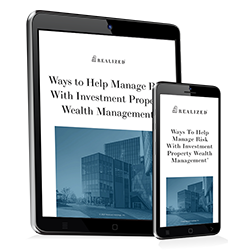Page 8 71 - 80 of 142
What is Concentration Risk and How Can You Mitigate It?

Putting all your eggs in one basket speaks to the essence of concentration risk.
What Is Regulatory Risk and How Can I Mitigate It?

Changes in federal, state, or local regulations by governing bodies can negatively impact many sectors of business, financial securities, or the stock market. These changes could lead to higher costs of doing business, unfavorable tax environments, or even unhinge an industry’s entire business model.
What Is the 5% Rule in Real Estate Investing?

There are many ways to slice and dice the rent vs. homeowner debate. You can spend lots of time on various calculations and weighing pros/cons only to be left with no decision. But for those who aren’t as familiar with real estate, where do you even begin this debate?
What Is Leverage in Real Estate?

Leverage can be one of the most important aspects of your real estate investments.
What Is Duration (Horizon) Risk?
%20risk%3F-1192866996.jpg?width=750&height=392&name=What%20is%20duration%20(horizon)%20risk%3F-1192866996.jpg)
An investment with a short hold time can be less risky than the same investment with a longer hold time. This is mainly due to more factors and unknowns that can be introduced within a longer time frame.
How Does Inflation Increase Investment Risk?

There is no aspect of the economy that’s unaffected by inflation. From consumer spending to employment, investments to interest rates, a sustained rise in cost of goods and price levels reduces purchasing power and erodes the value of investments.
How to Distribute Assets for a Better Return

Asset allocation, also called asset distribution, is a measure of how the breadth of your investment portfolio is spread among varying asset classes. The goal of asset allocation, also called portfolio diversification, is to maximize expected returns for a given level of risk.
What Is Sponsor Risk in Real Estate?

Sponsors are the representatives of real estate deals for investors and developers. To maintain a good reputation and continued deal flow, sponsors need to provide high-quality service, which means a smooth deal transaction from beginning to end.
What Are Investment Risk Factors?

Understanding various risk factors can help any investor in the management of risks. Risk management is a deep subject, requiring lots of knowledge about assets and their associated risks.
What is Geographic Risk in Real Estate?

Location may be an old saw in real estate, but the saying will always make sense, especially when it comes to geographical risk.
Page 8 71 - 80 of 142


